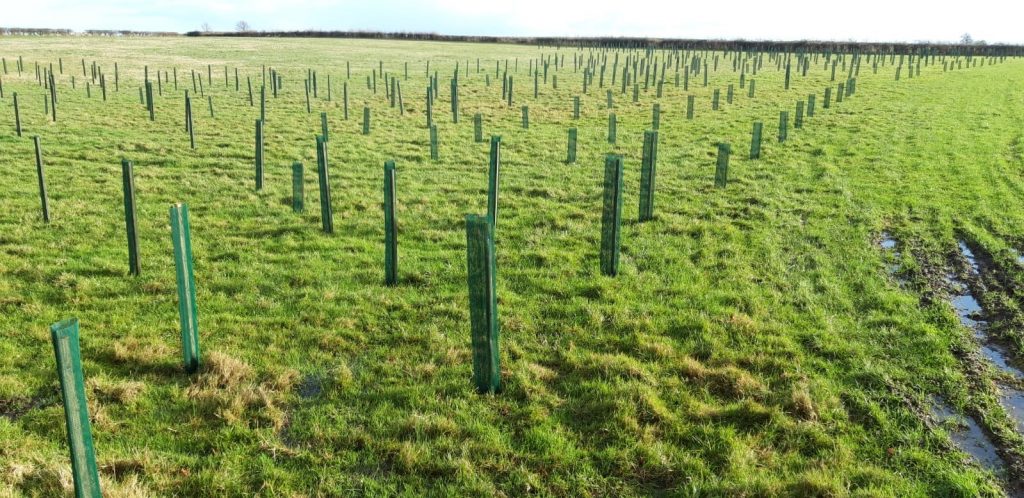The year ended with planting, although not the planting I really hoped to do be doing. As part of an ongoing programme of restoring and creating new woodland and hedges around the farm, an acre of grassland was chosen to establish a woodland. In total we planted 500, UK sourced trees comprising of a mixture of deciduous species.
In time, this should provide a great wildlife habitat, helping to support biodiversity that borders both arable and grassland. Especially important as this year, we saw our first signs of Ash dieback over the summer which will have a great impact on our woodlands in this area as Ash makes up a significant portion of the populations. It was certainly a satisfying way to close a decade and should at least make it easy to remember in future years when it was planted!

Hundreds of trees have been planted across the farm - a nice way to mark the end of the decade and the start of a new one
Hooves return to graze the cover crops
For a second winter running, sheep have returned to our arable acres to graze the cover crops. This follows encouraging results from last season, both in terms of residue and nutrient recycling, and the subsequent benefit to our spring cropping. Although, I’ll admit given the amount of rain seen during the autumn and into December there was a degree of hesitancy. But with a clear spell of weather during the week of Christmas, and the option of a runback onto ridge and furrow grassland should heavy rain make a return, the sheep were set to work.
The cover crop mixture comprised of oats, phacelia, vetches and sunflowers, and as is our usual practice the crop was established inter-row of the previous wheat crop straight behind the combine with the Mzuri Pro-Til. The combination of stubbles on undisturbed soil and a strong stand of cover species, has ensured the ewes are carrying well. The grazier is also doing a great job of keeping the ewes moving, so that any one area doesn’t become over trampled, safeguarding the condition of our topsoil.

The sheep made the most of a (short) dry spell over Christmas and grazed our inter row drilled cover crops
Heavy soils cope well with the harsh rain given the circumstances
Following an autumn that will live long in the memory it will remain ingrained not only for the volume of rain, but also for the total number of days it rained! The result has meant we remain significantly below our planned acreage of winter wheat as we move into the new year, but fields drilled early in preparation for Autumn visitors are looking well and are testament to the well structure soil we’ve built up over the years.
It’s proven to be a real test of our heavy clay soils, but over the last 10 years having restructured, worm populations have rebuilt, SOM has increased and with the soil now in overall good health I have to say it has taken the rain remarkably well. Resilience in our soils is something we can all aim for, particularly when the elements remain as unpredictable as ever.
With time still to plant our winter wheat if a weather window allows, our attention is beginning to turn to spring cropping and getting back on the ground.
Wishing a successful 2020 and new decade, let’s see what this one brings!

Early drilled Wheat looked well throughout December despite the mammoth amounts of rain we've received